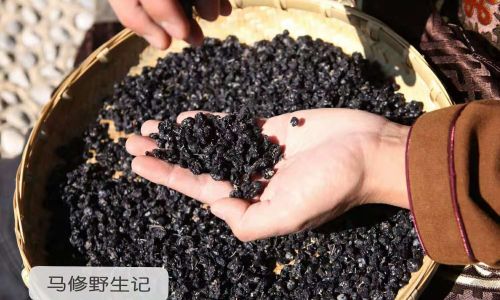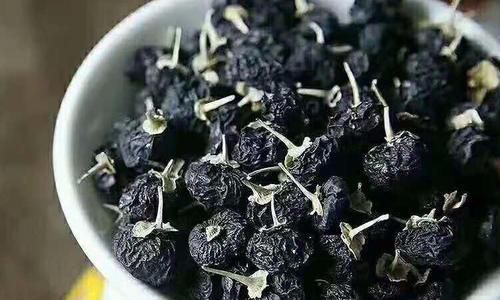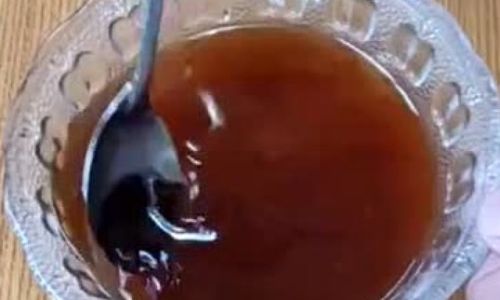Introduction
Goji berries, scientifically known as Lycium barbarum, are renowned for their nutritional benefits and medicinal properties. These tiny, red-orange berries have been a staple in traditional Chinese medicine for centuries, praised for their ability to enhance vitality, improve vision, and support overall health. Among the various types of goji berries, black goji berries (often referred to as Lycium ruthenicum) stand out due to their unique dark color and even richer antioxidant content. However, preserving black goji berries to retain their freshness, flavor, and nutritional value can be challenging. This comprehensive guide will delve into the various methods and considerations for effectively preserving black goji berries, ensuring you can enjoy their benefits for an extended period.
Understanding Black Goji Berries
Before diving into preservation techniques, it’s crucial to understand the unique characteristics of black goji berries. Unlike their more common red counterparts, black goji berries grow in harsher, drier climates, primarily in the Tibetan Plateau and other high-altitude regions of Asia. Their dark hue is a result of higher concentrations of antioxidants, particularly anthocyanins, which give them their distinctive color and additional health benefits. These berries are known to be rich in vitamins, minerals, amino acids, and polysaccharides, making them a highly valued superfood.
Why Preserve Black Goji Berries?

Preserving black goji berries is essential for several reasons:
- Nutrient Retention: Fresh berries contain the highest levels of nutrients, but these can degrade over time if not stored properly.
- Flavor Preservation: Proper preservation maintains the berries’ sweet-tart flavor and chewy texture.
- Economic Considerations: Buying in bulk can be cost-effective, but only if the berries can be stored without spoilage.
- Convenience: Having a stash of preserved berries ensures you can enjoy them year-round, regardless of seasonal availability.
Factors Affecting Preservation
Several factors influence how well black goji berries can be preserved:
- Moisture Content: High moisture content accelerates spoilage. Dried berries have a longer shelf life.
- Temperature: Lower temperatures slow down biochemical reactions that lead to spoilage.
- Light Exposure: UV light can degrade antioxidants and pigments.
- Oxygen Exposure: Oxygen promotes oxidation, leading to nutrient loss and rancidity.
- Packaging: Proper packaging protects berries from environmental factors.
Methods for Preserving Black Goji Berries
There are several methods for preserving black goji berries, each with its own set of pros and cons. Here’s a detailed look at each:
Drying

Drying is one of the oldest and most effective methods for preserving goji berries. By removing moisture, you create an environment that’s hostile to microbial growth.
- Sun Drying: Spread clean, unwashed berries on a clean, dry surface in direct sunlight. Stir occasionally to ensure even drying. This method is eco-friendly but can be unpredictable due to weather changes.
- Dehydrator: Using a food dehydrator allows for more controlled drying conditions. Set the temperature to around 115°F (46°C) and dry until the berries are brittle. This method is faster and more consistent.
- Oven Drying: Preheat your oven to its lowest setting (usually around 150°F or 65°C) and place berries on baking sheets. Prop the oven door open slightly to allow moisture to escape. Monitor closely to prevent overcooking.
Once dried, store in an airtight container in a cool, dark place. Properly dried berries can last up to a year.
Freezing
Freezing is another effective method, especially if you prefer to consume the berries raw or in smoothies.
- Preparation: Rinse berries gently and pat them dry. Remove any stems or imperfect berries.
- Freezing Techniques:
- Individually Quick Frozen (IQF): Spread berries in a single layer on a baking sheet and freeze until solid. Transfer to freezer bags, removing as much air as possible.
- Blanching: Briefly blanch berries in boiling water (30-60 seconds) before plunging them into ice water. Pat dry and freeze as above. Blanching helps retain color and texture.
- Storage: Label bags with the date and store in the freezer. Frozen berries can last up to two years.
Vacuum Sealing
Vacuum sealing removes oxygen from the packaging, creating an anaerobic environment that slows down spoilage.

- Preparation: Ensure berries are dry and free of debris.
- Vacuum Sealing: Use a vacuum sealer to remove air from the packaging. For best results, use specialized bags designed for food preservation.
- Storage: Store in a cool, dark place. Vacuum-sealed berries can last several months to a year, depending on the initial quality and storage conditions.
Canning
While less common for goji berries, canning can be an option for long-term preservation, especially if you plan to use the berries in cooked dishes.
- Preparation: Wash and dry berries thoroughly.
- Syrup Packing: Pack berries into clean jars and cover with a light syrup (sugar and water). Ensure there are no air bubbles.
- Processing: Process jars in a water bath canner at boiling temperatures for the appropriate length based on jar size (usually 20-30 minutes for pint jars).
- Storage: Store canned berries in a cool, dark pantry. They can last up to a year if processed correctly.
Alcohol Preservation (Tinctures)
Creating a goji berry tincture preserves the berries’ nutrients in alcohol.
- Preparation: Clean berries and remove stems.
- Tincture Making: Place berries in a glass jar and cover with a high-proof alcohol like vodka or Everclear. Use a ratio of about 1 part berries to 2-3 parts alcohol.
- Storage: Seal the jar tightly and store in a cool, dark place. Shake occasionally to ensure even extraction. A goji berry tincture can last indefinitely if stored properly.
Cryogenic Freezing
Cryogenic freezing involves using extremely low temperatures (-196°F or -128°C) to preserve food.

- Professional Services: This method is typically done by commercial services due to the specialized equipment required.
- Advantages: Cryogenic freezing can extend the shelf life of berries significantly, sometimes up to five years or more.
- Considerations: Cost and accessibility are significant barriers.
Best Practices for Storage
Regardless of the preservation method chosen, follow these best practices to ensure optimal storage:
- Cleanliness: Always start with clean berries free of dirt, debris, and mold.
- Proper Packaging: Use airtight containers designed for food storage. Avoid using plastic bags unless they are specifically meant for food preservation.
- Labeling: Clearly label packages with the date of preservation and method used.
- Cool, Dark Place: Store in a cool, dark area to minimize exposure to heat and light.
- Monitoring: Regularly check stored berries for signs of spoilage, such as mold, discoloration, or off odors.
Conclusion
Preserving black goji berries is a straightforward process once you understand the basics of food preservation and the unique characteristics of these berries. By choosing the right method—whether it’s drying, freezing, vacuum sealing, canning, making a tincture, or using cryogenic freezing—you can ensure that your black goji berries retain their nutritional value, flavor, and texture for an extended period. Remember, the key to successful preservation lies in meticulous preparation, proper packaging, and storage in optimal conditions. With these guidelines, you can enjoy the health benefits of black goji berries throughout the year.





0 comments